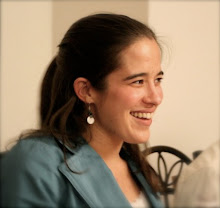I will be living in Tamil Nadu, a state in the southeastern tip of India. It is part of South India, differentiated from North India by language (Hindi is more common in the north, while each state typically has its own language in the south), ethnicity (the north is more Indo-Aryan and the south Dravidian), and culture (multiple in both locations but especially in the south). The language and people group of Tamil Nadu are both called Tamil, so I will be attempting to learn (with some help from fellow Indian-American medical student travelers) a bit of Tamil en route to India as well as while there. I do not aim for fluency or even conversationality, but common things like “thank you,” “good morning,” “does this hurt?” for use in everyday conversations and medical encounters in the hospital will probably be helpful.

The state north of Tamil Nadu is Andhra Pradesh, my traveling companion Nithya's home state; the state to the west is Kerala, where we hope to do some backwater touring.
Country statistics (comparisons to USA in parentheses for reference)
- size: 3 million sq km – 1/3 the size of the USA
- population: 1.1 billion people (second most populous country in the world – compare USA 307 million)
- median age: 25.3 years (cp. 36.7 yrs)
- Vellore town: 200,000 (cp. Philadelphia 1.54 million)
- health statistics
- infant mortality: 30 deaths/1000 live births (cp. 6.22)
- total fertility rate: 2.72 children born/woman (cp. US 2.05)
- HIV/AIDS adult prevalence rate: 0.3% = 2.4 million people living with HIV/AIDS (cp. 0.6%)
- life expectancy at birth: 70 years (cp. 78 yrs)
- major infectious diseases: bacterial diarrhea, hepatitis A and E, typhoid fever, dengue fever, chikungunya, Japanese encephalitis, malaria, leptospirosis, rabies
- religions
- Hindu 80.5%
- Muslim 13.4%
- Christian 2.3%
- Sikh 1.9%
- languages
- Hindi 41%
- Bengali 8.1%
- Telegu 7.2%
- Marathi 7%
- Tamil 5.9%
- etc. – 14 official languages besides Hindi
- education
- literacy – 61% (73% male, 48% female)
- school life expectancy: 10 years (11 for males, 9 for females)
- politics
- 28 states, 7 union territories
- capital: New Delhi
- Independence: August 15, 1947



Hi Amaris, I am one of Swetha's friends and I am really excited to follow all of your adventures in India. In regards to a thought you had in the first paragraph, about being behind the others, I wonder if in some ways you might actually make it out ahead. We Indian-Americans (and, actually, probably any child of immigrants) can sometimes have preconcieved notions that can be outdated or just plain wrong.
ReplyDeleteI bet the others will find your insights incredibly helpful and enlightening at the same time they are enlightening you!